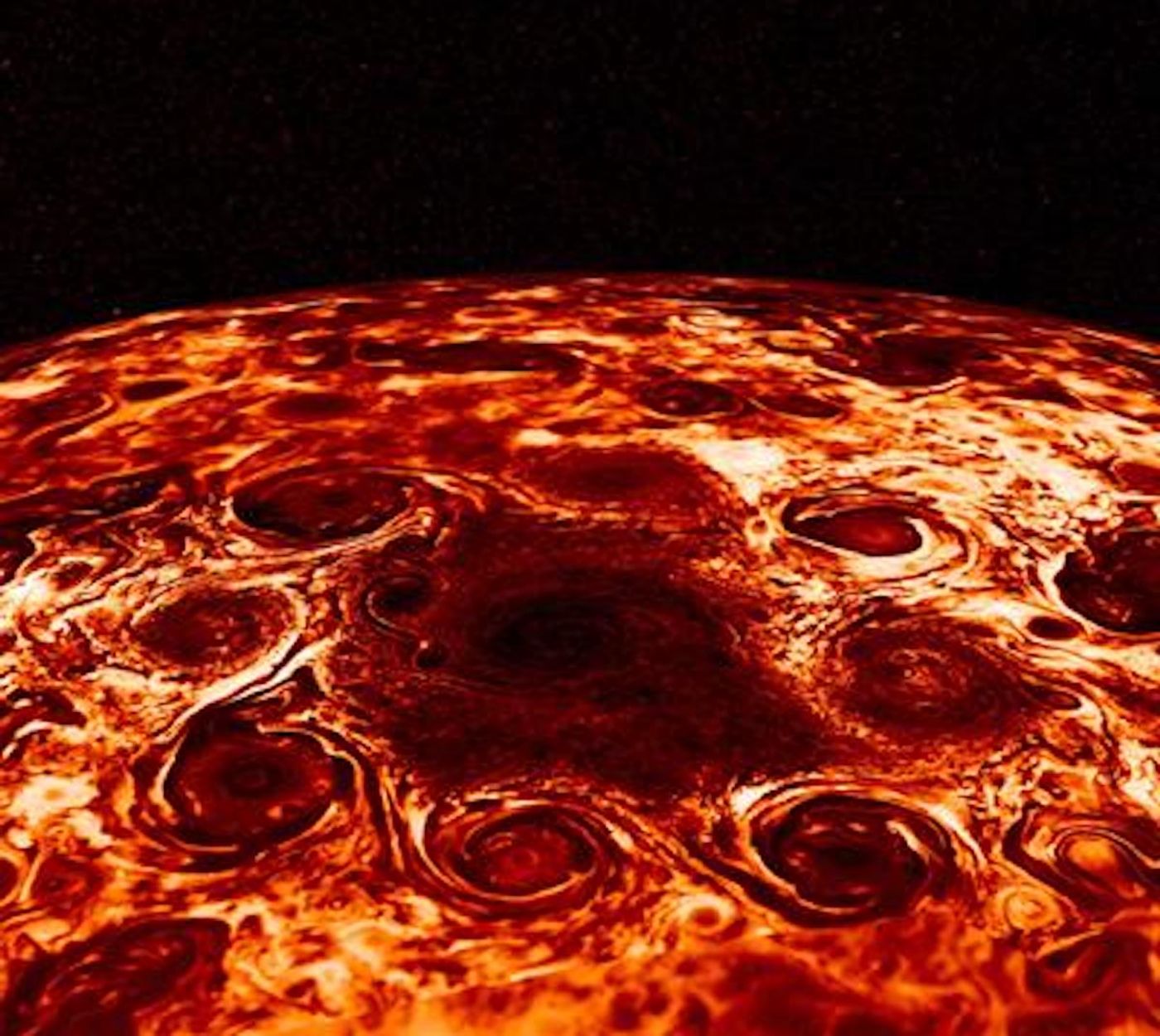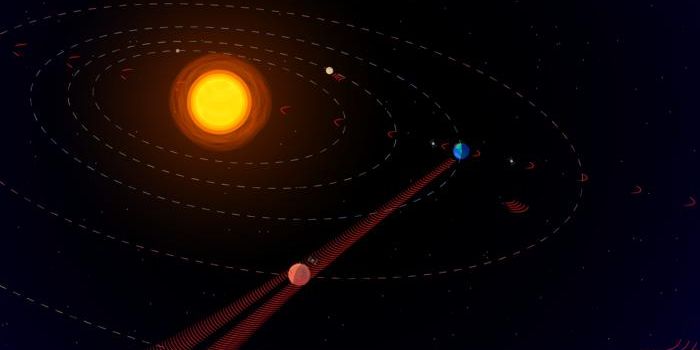Solving the Mystery of Jupiter's Astonishing Storms
Hurricanes don't only happen on Earth; the giant planet Jupiter is also home to swirling storms. On Jupiter, however, multiple storms are arranged in a geometric pattern near the gaseous planet's South Pole. NASA's Juno space probe captured images of this pattern in 2019, prompting scientists to try to learn more about this pentagon or hexagon formation of storms.
Reporting in the Proceedings of the National Academy of Sciences, researchers in the lab of Andy Ingersoll, a Caltech Professor of Planetary Science, have now figured out why these storms behave this way. The math they used to do it was derived from a proof by British mathematical physicist Lord Kelvin, who worked around 150 years ago.
"If you went below the cloud tops, you would probably find liquid water raindrops, hail, and snow," said Ingersoll. "The winds would be hurricane-force winds. Hurricanes on Earth are a good analog of the individual vortices within these arrangements we see on Jupiter, but there is nothing so stunningly beautiful here."
Jupiter's storms, like Earth's hurricanes, tend to form near the equator and then move toward the poles. On Earth, however, they dissipate as they move farther away while on Jupiter, they remain robust, and are still fully formed when they reach the poles.
"The difference is that on the Earth, hurricanes run out of warm water and they run into continents," Ingersoll said. There's no land on Jupiter, "so there's much less friction because there's nothing to rub against. There's just more gas under the clouds. Jupiter also has heat leftover from its formation that is comparable to the heat it gets from the sun, so the temperature difference between its equator and its poles is not as great as it is on Earth."
These observations are not enough to explain why the storms arrange into a geometrical pattern once they get to the South Pole, noted Ingersoll. Saturn, another gas giant, simply has one humongous storm at each pole, without a geometric arrangement of individual storms.
The scientists brought the math of Lord Kelvin together with work performed in 1878 by American physicist Alfred Mayer. Mayer found that when circular magnets were placed in a pool of water, they would spontaneously form a geometric configuration, just as storms do on Jupiter. The shapes they made depended on the number of magnets.
"Back in the 19th century, people were thinking about how spinning pieces of fluid would arrange themselves into polygons," Ingersoll explained. "Although there were lots of laboratory studies of these fluid polygons, no one had thought of applying that to a planetary surface."
With a set of equations called the shallow-water equations, the scientists built a computer model of the events on Jupiter and ran simulations.
"We wanted to explore the combination of parameters that makes these cyclones stable," said lead study author and UC Berkely postdoctoral fellow Cheng Li. "There are established theories that predict that cyclones tend to merge at the pole due to the rotation of the planet and so we found in the initial trial runs."
They also determined that if a ring of winds turned in the opposite direction of the storms, an anti-cyclonic ring, the storms would repel rather than merging.
"Other planets provide a much wider range of behaviors than what you see on Earth," said Ingersoll, "so you study the weather on other planets in order to stress-test your theories."
Sources: AAAS/Eurekalert! via Caltech, Proceedings of the National Academy of Sciences









